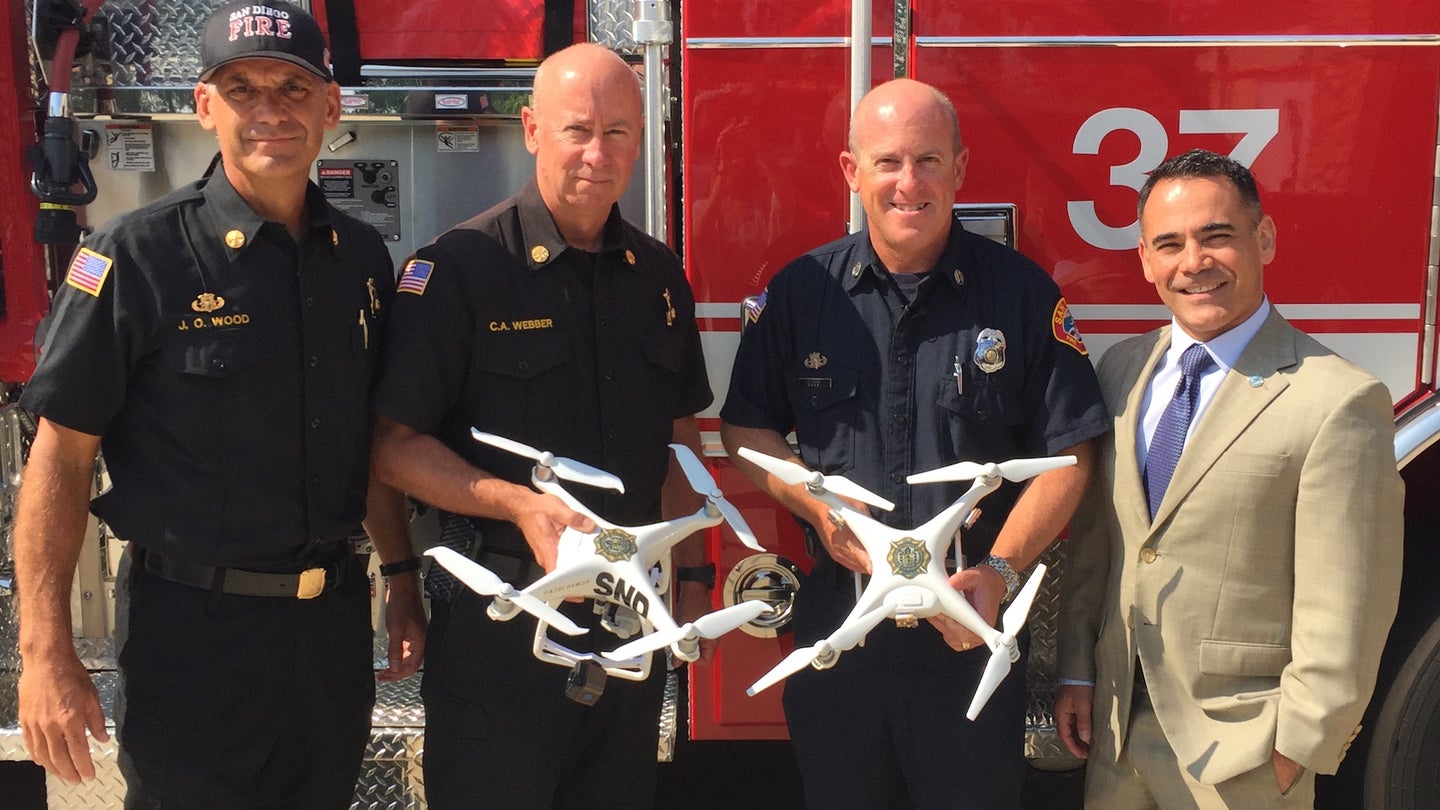Cape and San Diego Publicly Deploy Drone in City’s First UAS Integration Pilot Program Flight
The San Diego Fire Department and drone data company Cape deployed the first public UAS Integration Pilot Program drone in the city’s history.

Cloud-based drone telepresence and data management company Cape partnered with the City of San Diego on Friday for a public drone deployment that markets the city’s first UAS Integration Pilot Program (IPP) demonstration by the San Diego Fire Department. According to Cape’s press release, the company’s launch in San Diego has now joined this week’s successful Project Wing mission as one of the first public IPP deployments in the United States.
The Trump administration’s UAS IPP, of course, is an FAA and Transportation Department initiative overseeing a select few corporate entities conduct drone testing with loosened regulations in 10 select states across the country, in order to safely expand commercial drone applications.
Friday’s event began with a live public safety demonstration at San Diego Fire Station 37, during which the Cape and the SFFD used the company’s Aerial Telepresence platform during a simulated fire call. The public demonstration presented onlookers with the impressive capabilities of Cape’s cloud-based platform, namely providing real-time aerial footage from the UAV’s perspective to both first responders at the scene and those at the command center. Firehouses across the country are clearly, increasingly eager to attain these kinds of invaluable services with each passing month.
“Today’s smartest cities are turning to drones to not only power innovation but to improve the safety of residents, visitors and first responders,” said Cape CEO Chris Rittler. “It’s an honor to be a part of one of the very first IPP deployments and to showcase the full capabilities of drones and the impact on public safety. The city of San Diego is helping define the smart cities of the future and we are extremely proud to be the technology partner they trust to make it possible.”
We recently reported on the glaring increase in public safety offices across the country deciding to implement drones in their day to day activities, from law enforcement and fire departments to emergency medical services. While Department of Homeland Security (DHS) Secretary Kirstjen Nielsen was busy learning about the increase in reported criminal UAV activity on the U.S.-Canada border in North Dakota, Executive Director of San Diego’s DHS office John Valencia attended the Cape demonstration on Friday, with nothing but glowing reactions.
“This advanced technology will make emergency responses more efficient, reduce costs and save lives,” said Valencia. “Time is valuable in any situation and drones will allow the City to better allocate resources when responding to emergencies.” To his point, it’s true that time is of the essence when it comes to locating missing, injured, or criminal persons. We recently reported on the P3 Charity in Lincolnshire, England, and its aerial efforts to regionally do so.
Of course, not everyone is as enthusiastic of law enforcement, the DHS, or otherwise authoritative entities like fire departments gaining access to camera-drones inherently capable of acting as surveillance tools. These are highly imperative discussions to be had in a functioning democracy, and hopefully, federal, state, and local governments continue to have them, and perhaps take a page from Fairfax County, Virginia’s book and listen to the citizenry throughout each significant stage of drone integration.
Regarding Cape, this was the very same company that managed to reduce Ensenada, Mexico’s crime rate by a whopping 10 percent with the mere implementation of its platform. That, undoubtedly, seems like a force for good, and the overall public wellbeing. In those terms, it certainly seems like unmanned aerial technology is being put to positive use within the United States. Unless, of course, you’re wanted by the law.
